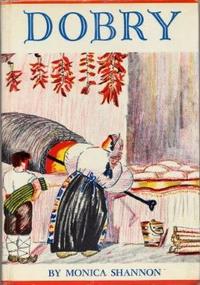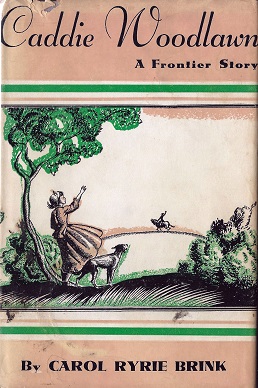
Caddie Woodlawn is a children's historical fiction novel by Carol Ryrie Brink that received the Newbery Medal in 1936 and a Lewis Carroll Shelf Award in 1958. The original 1935 edition was illustrated by Newbery-award-winning author and illustrator Kate Seredy. Macmillan released a later edition in 1973, illustrated by Trina Schart Hyman.

The Grey King is a contemporary fantasy novel by Susan Cooper, published almost simultaneously by Chatto & Windus and Atheneum in 1975. It is the fourth of five books in her Arthurian fantasy series The Dark is Rising.

Sarah, Plain and Tall is a children's book written by Patricia MacLachlan and the winner of the 1986 Newbery Medal, the 1986 Scott O'Dell Award for Historical Fiction, and the 1986 Golden Kite Award. It explores themes of loneliness, abandonment, and coping with change.

From the Mixed-Up Files of Mrs. Basil E. Frankweiler is a novel by E. L. Konigsburg. The book follows siblings Claudia and Jamie Kincaid as they run away from home to the Metropolitan Museum of Art in New York City. It was published by Atheneum in 1967, the second book published from two manuscripts the new writer had submitted to editor Jean E. Karl.

The View from Saturday is a children's novel by E. L. Konigsburg, published by Atheneum Books for Young Readers in 1996. It won the 1997 Newbery Medal for excellence in American children's literature, the author's second Medal.

Up a Road Slowly is a 1966 coming-of-age novel by American writer Irene Hunt, which won the Newbery Medal for excellence in American children's literature. This book is about a young child named Julie who grows from 7 to 17 years old with her aunt Cordelia and uncle Haskell in the country.

A Gathering of Days; A New England Girl's Journal, 1830-32 (1979) is a historical novel by Joan Blos that won the 1980 National Book Award for Children's Books (hardcover) and the 1980 Newbery Medal for excellence in American children's literature.

Adam of the Road is a novel by Elizabeth Janet Gray Vining. Vining won the Newbery Medal for excellence in American children's literature in 1943 from the book. Set in thirteenth-century England, the book follows the adventures of a young boy, Adam. After losing his spaniel and minstrel father, Adam embarks on a series of escapades throughout medieval England. The book is illustrated by Robert Lawson.
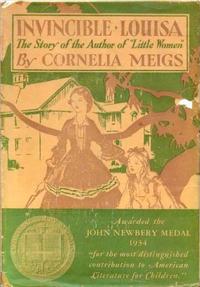
Invincible Louisa is a biography by Cornelia Meigs that won the Newbery Medal and the Lewis Carroll Shelf Award. It retells the life of Louisa May Alcott, author of Little Women.
Monica G. Shannon Wing was a Canadian-born American children's author. Her book Dobry, published in 1934, received the Newbery Medal in 1935.

Elizabeth Wright Enright Gillham was an American writer of children's books, an illustrator, writer of short stories for adults, literary critic and teacher of creative writing. Perhaps best known as the Newbery Medal-winning author of Thimble Summer (1938) and the Newbery runner-up Gone-Away Lake (1957), she also wrote the popular Melendy quartet. A Newbery Medal laureate and a multiple winner of the O. Henry Award, her short stories and articles for adults appeared in many popular magazines and have been reprinted in anthologies and textbooks.
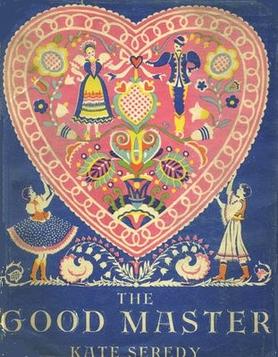
The Good Master (1935) is a children's novel written and illustrated by Kate Seredy. It was named a Newbery Honor book in 1936. The Good Master is set in the Hungarian countryside before World War I and tells the story of wild young Kate, who goes to live with her Uncle's family when her father can't control her and at the end she goes back to her father. At Uncle Marton's suggestion, Kate and her father move back to the country to live, to be near Marton and his wife and son. Like his brother Marton, Kate's father Sandor is a countryman and misses rural life. And he sees what a wonderful effect country life has had on Kate.

Calico Bush is a children's historical novel by Newbery-award-winning author Rachel Field. Considered by some to be her best novel, it was first published in 1931 and received a Newbery Honor award.

The Singing Tree is a children's novel by Kate Seredy, the sequel to The Good Master. Also illustrated by Seredy, it was a Newbery Honor book in 1940. Set in rural Hungary four years after The Good Master, it continues the story of Kate and Jancsi, showing the effect of World War I on the people and land.
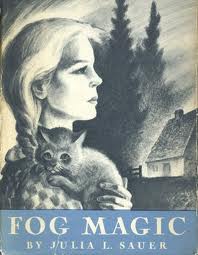
Fog Magic by Julia L. Sauer is a children's fantasy novel set in Nova Scotia. It was a Newbery Honor recipient in 1944. Fog Magic tells the story of a young girl who, on foggy days, travels back in time to enter the past life of an abandoned village. Lynd Ward illustrated the book, which was published by Viking.
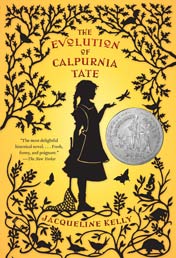
The Evolution of Calpurnia Tate is a 2009 historical young adult novel by Jacqueline Kelly that received a 2010 Newbery Honor Award. It is the story of a young girl growing up in Texas.
Kelly Barnhill is an American author of children's literature, fantasy, and science fiction. Her novel The Girl Who Drank the Moon was awarded the 2017 Newbery Medal. Kirkus Reviews named When Women Were Dragons one of the best science fiction and fantasy books of 2022.

Merci Suárez Changes Gears is a 2018 children's book written by Meg Medina. Mercedes "Merci" Suárez, the eponymous heroine, is a sixth grade scholarship student at an elite private school in South Florida. The novel details her struggles at school and home. The novel was awarded the 2019 Newbery Medal.

Genesis Begins Again is a 2019 children's book by Alicia D. Williams. It tells the story of thirteen-year-old Genesis Anderson, whose family has been evicted several times from their home due to the father's gambling addiction. Genesis is also a victim of bullying and colorism, both at home and school, two recurring themes of the novel. Genesis Begins Again, Williams' debut novel, received general praise and won a Newbery Honor and "Steptoe Award for New Talent".
Atanas Katchamakoff was a Bulgarian-American sculptor, woodcarver, and illustrator known for works that bridged his Bulgarian heritage and his artistic life in America. He gained recognition for his sculptures, his art school in Palm Springs, and his children's book illustrations.
